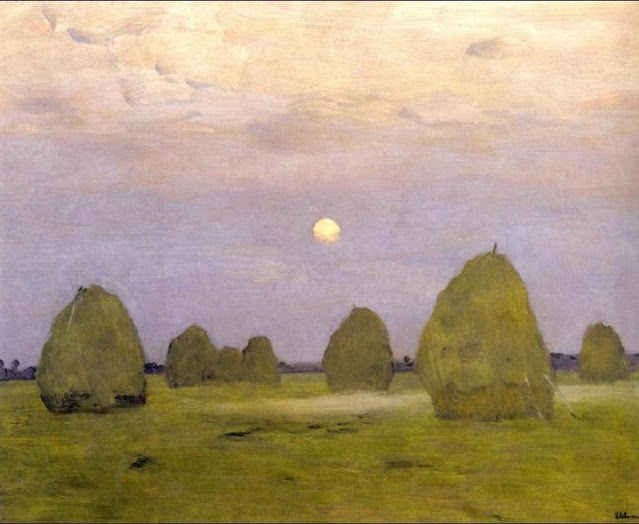 |
| Winslow Homer (1836 - 1910) - Eastern Point Light, 1880 Watercolor over graphite, 24.6 x 34.1 cm Princeton University Art Museum |
Eastern Point Light belongs to an extraordinary series of bold and experimental watercolors painted by Homer on Ten Pound Island, off Gloucester, Massachusetts, during the summer of 1880. These works show Homer pushing himself to achieve an unprecedented expressiveness, occasionally verging on abstraction. This moonlit seascape stands out from the numerous brilliantly colored sunset scenes in the series with its monochromatic palette of blues and blacks set off by whites. For these, Homer employed various techniques, including dragging a relatively dry brush quickly across the sheet to allow the plain surface to show through. In the area of the water there is evidence that Homer used the end of his brush to gouge out some of the wet pigment to capture the dappled light, while the circle of the full moon appears to have been scraped out. Soon after completing this masterful watercolor, Homer traveled to the northeast coast of England where he spent almost two years depicting the sea, which became the dominant theme of his later work. Via
%20-%20Moonlit%20River%20Scene%20with%20a%20Ruined%20Gothic%20Church,%20and%20a%20Stone%20Bridge%20with%20an%20Angler.jpg)

.jpg)








